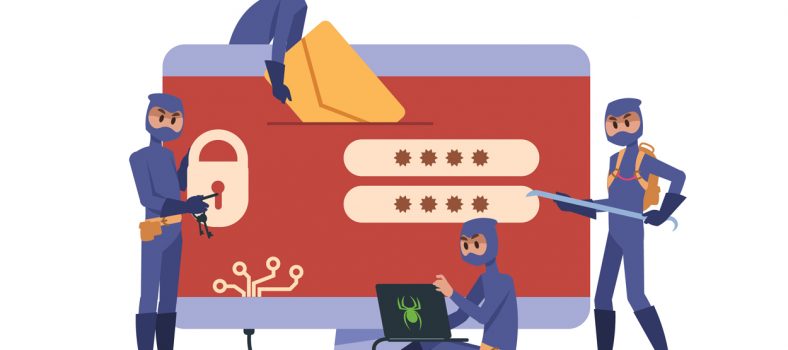 By Robert Hyde
By Robert Hyde
The COVID-19 pandemic deeply impacted the Canadian payments industry and accelerated the migration to digital and contactless payments. Canadians continue to seek more choice and flexibility in how they make payments without sacrificing security and convenience, but the pandemic has further underscored the need for more services to help Canadians achieve financial inclusion. While 99 percent of Canadians have an account with a financial institution, approximately 10-20 percent are either unbanked or underbanked, meaning they do not have access to a wide range of convenient or everyday banking services. The gaps in the Canadian market for supporting financial inclusion will only continue to widen if businesses and governments don’t act swiftly to meet Canadians’ payments needs. This is particularly true for small merchants that have been greatly affected from the lack of in-store retail and inherent shift in how Canadian consumers shop and pay online.
To support and evolve financial inclusion, we can look at the current payments landscape and find ways to close these gaps that align with Canadian preferences. Here are four current Canadian payments trends and ways we can offer increased access:
- Search for more payment options. In 2020, eCommerce exploded in Canada, growing by 20 percent in value compared to the prior year. According to Payments Canada, close to half of Canadians reporting using eCommerce platforms for online purchases more frequently to purchase a wider range of products compared to pre-pandemic. But businesses are not yet meeting Canadians’ payments needed at the online checkout. In physical stores, consumers have the option to use many methods of payments, such as cash, debit or credit, but as consumers moved online, they are still most commonly being faced with a credit card payment option. While credit cards are popular, not everyone wants to use them or has access to them, which restricts access to Canadians who would prefer to shop online. As well, credit card use is expensive, costing merchants — and ultimately consumers — more than $5 billion annually. By including non-credit based options, merchants can achieve a more balanced cost structure, allowing more payment platforms to thrive without the full expense falling on the merchant.
- Growth of prepaid payments. According to the Canadian Prepaid Providers Organization (CPPO), the prepaid payments industry has grown 80 percent since 2019, totaling $8.7 billion, and is expected to continue growing to $17.2 billion by 2025. Prepaid products offer a great bridging solution to deliver banking-like services to more businesses and consumers who have been marginalized by not having equal access to the payments ecosystem. One example of enabling a prepaid product to support financial inclusion would be in government payments to replace issuing and mailing cheques. In 2019, there were 30 million cheques issued by the Government of Canada to disperse funds to citizens and businesses, but more than 800,000 (valued at $370 million) went unclaimed. This highlights a clear disconnect in how Canadians are being paid and how they’d prefer to be paid. As consumers move towards a preference for more convenient, cashless, contactless payment methods, prepaid will provide both incumbent banking organizations and new fintech entrants a way to introduce more products and services while still adhering to Canadian’s stringent regulatory environment.
- Increase in online government payments. Government payments have some of the largest gaps in financial inclusion, as there’s often a lag in terms of innovation around payments and government. A 2021 survey by Payment Source found that more than 70 percent of Canadians were interested in paying their 2020 taxes electronically given the newfound comfort with digital transactions stemming from the pandemic. A solution like PaySimply, an online and mobile app tax payment service, allows Canadians to make payments to government organizations using alternative payment methods or methods of payments that have not been traditionally used in government, such as credit card, eTransfer or PayPal. This secure and convenient online service enables users to pay several different types of taxes, from corporate income tax and payroll deductions, individual T1 taxes, benefit repayments and many others. With no account registration required, taxpayers simply select their tax type, enter the payment details — which include tax account number and payment amount — select a payment method and complete their payments in a few minutes.
- Shift to digital payments. COVID-19 has enhanced the use of digital payment technology. In regard to legacy payments trends in Canada, Interac eTransfer continues to experience explosive growth with a 43 percent increase in first-time usage last year, and it’s easy to see why: Not all debit cards are able to transact online, there are no balances to manage like with reloadable cards and no accounts to setup and manage like with digital wallets. Canada is on the cusp of finding alternative digital solutions to card solutions for the next frontier in payments.
The pandemic has opened eyes in terms of needing to change and find other payments approaches to support Canadians. Our nation’s goal must be to provide inclusive choice to Canadians on how they pay and get paid. By increasing purchase utility through digitizing cash, reducing cheque volume, and finding alternatives to enable online shopping, Canadians will be to transact in whatever way suits them.
Robert Hyde is the CEO at Payment Source.




